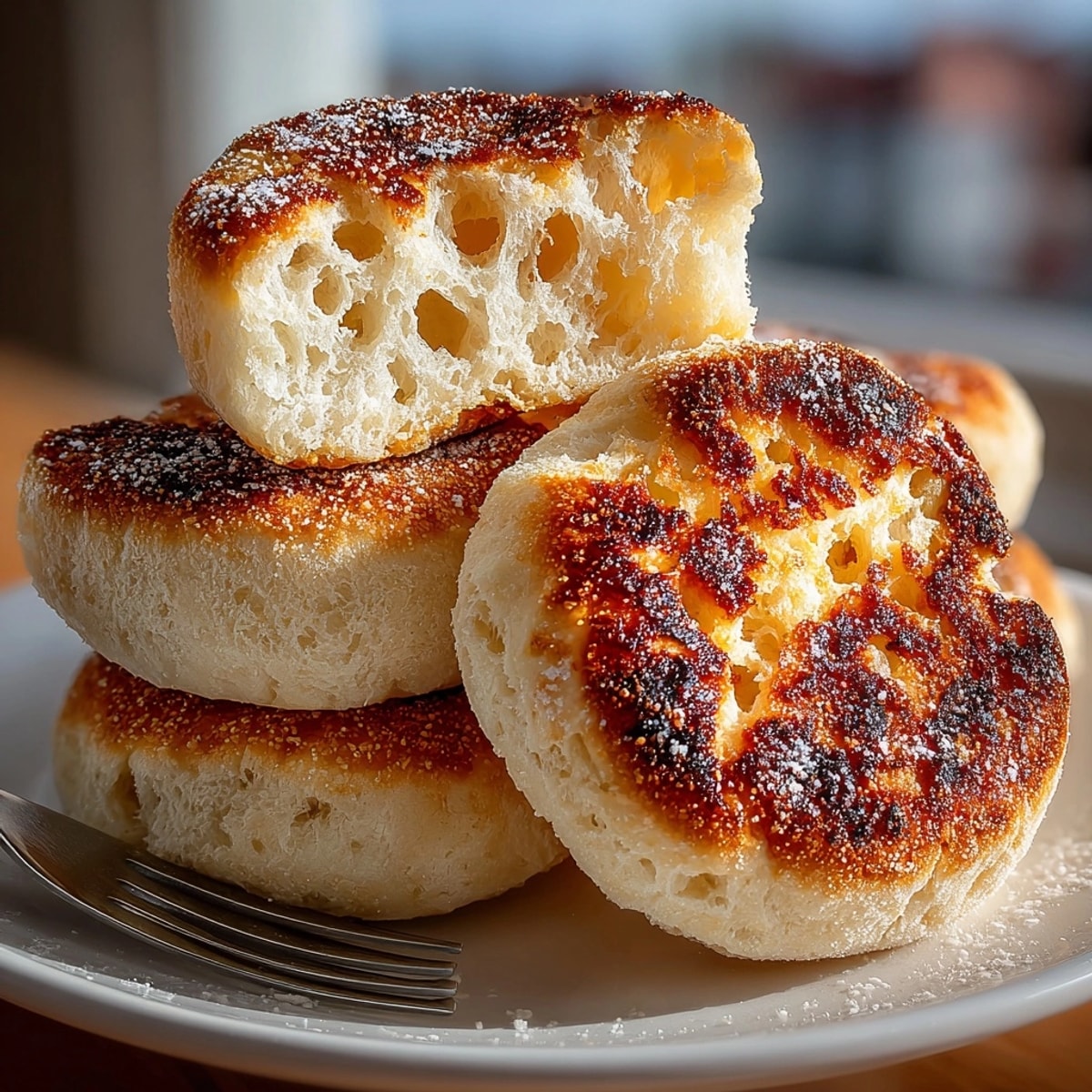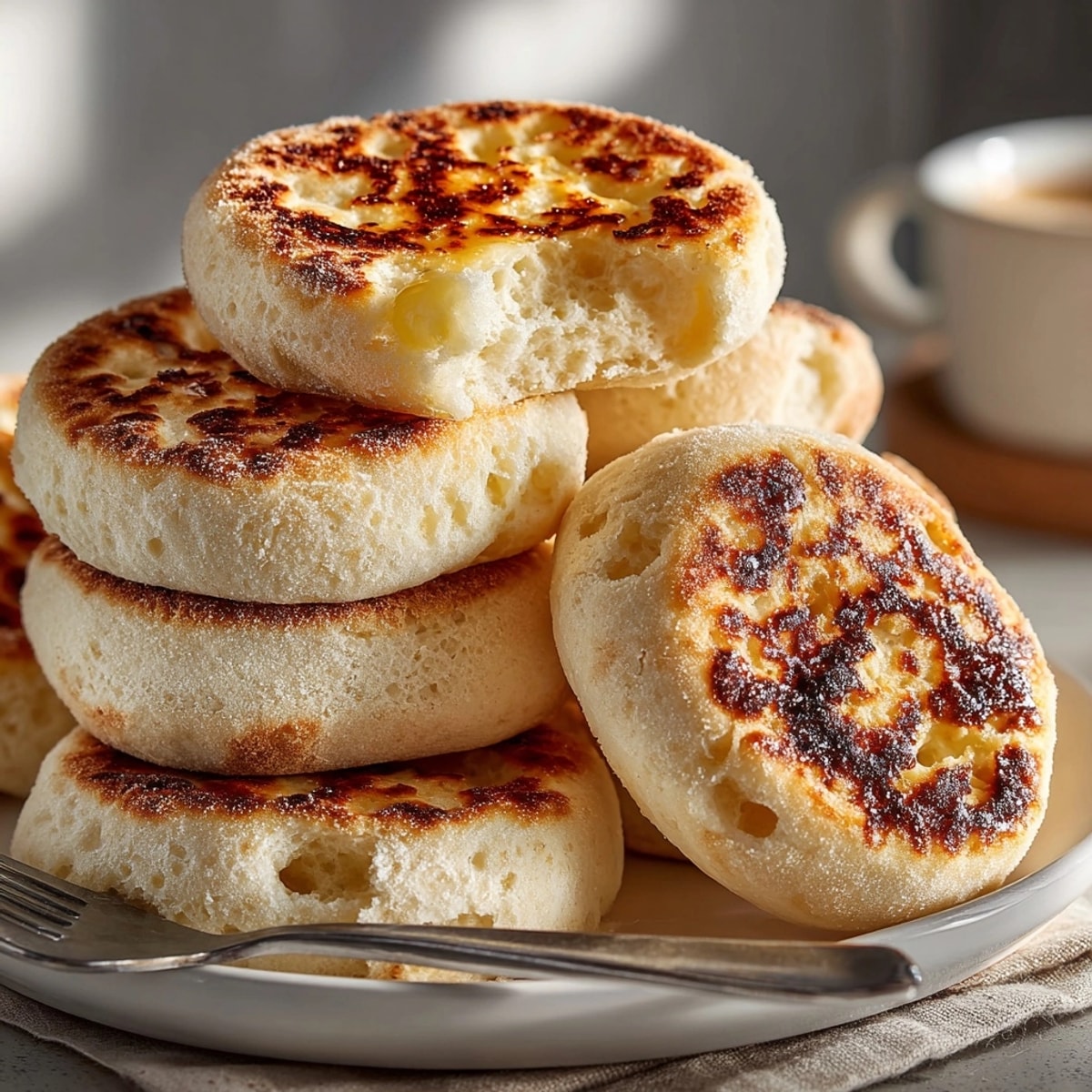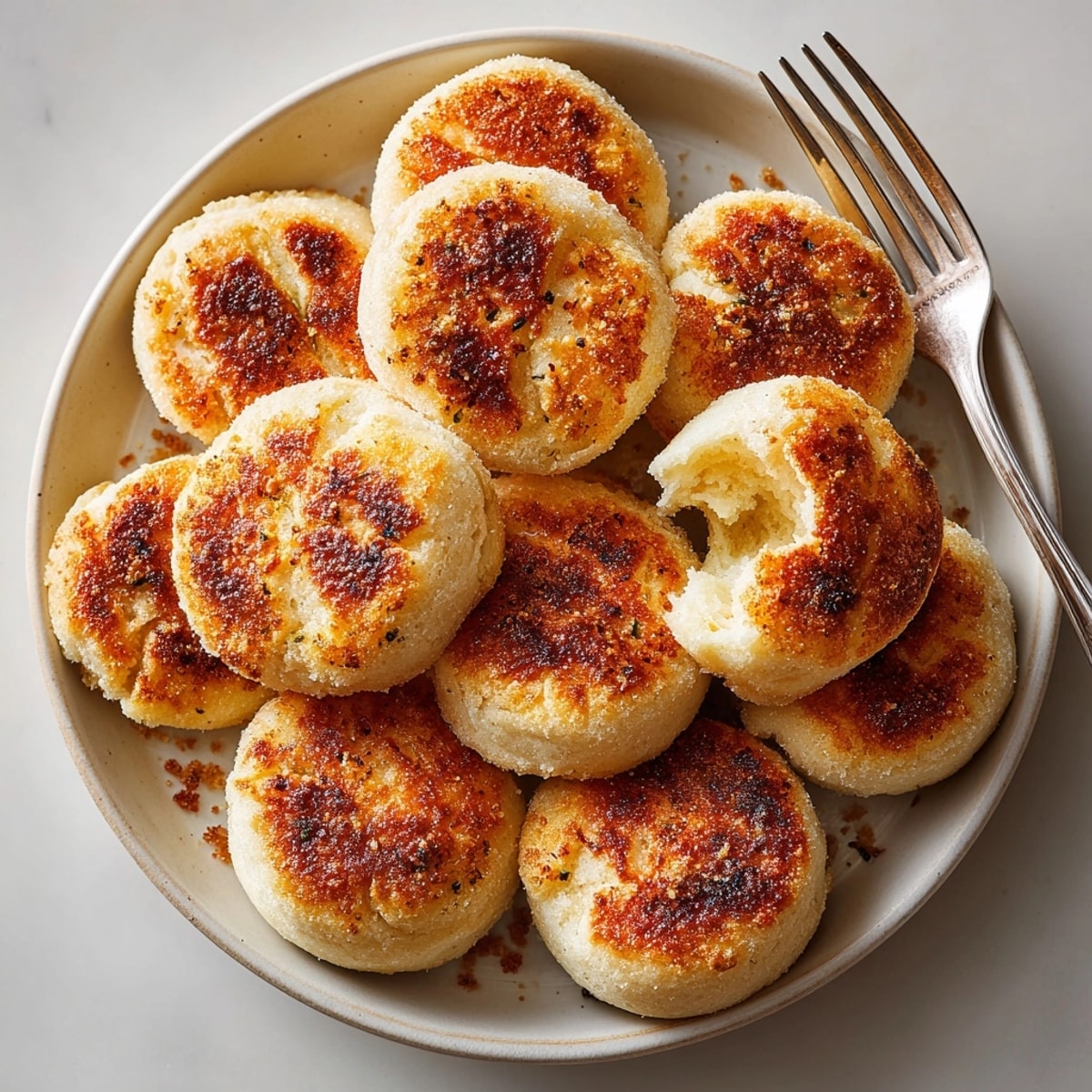 Save
Save This tangy sourdough English muffin recipe transforms simple ingredients into breakfast perfection. The long fermentation creates that distinctive sourdough flavor and perfect texture with plenty of nooks and crannies for melted butter to pool in. These homemade muffins outshine anything from the grocery store and become even more delicious when toasted.
I first made these during a weekend baking session when I wanted something special for Sunday brunch. The family was so impressed that they've become our monthly tradition, especially when we have overnight guests who wake up to the incredible aroma.
Ingredients
- Active sourdough starter at 100% hydration: ensures proper fermentation and that signature tangy flavor
- Lukewarm whole milk: provides richness and tenderness to the crumb
- Melted unsalted butter: adds flavor and helps create a tender interior texture
- Sugar: feeds the sourdough and provides subtle sweetness to balance the tang
- Large egg: contributes to structure and richness in the final product
- Bread flour: contains higher protein for better structure and chewiness
- Fine sea salt: enhances all flavors and controls fermentation
- Cornmeal or semolina: prevents sticking and adds that traditional gritty exterior
Instructions
- Mix the wet ingredients:
- Thoroughly whisk together your active starter, lukewarm milk, melted butter, sugar, and egg until completely combined. The temperature matters here. Milk should be warm enough to activate the starter but not hot enough to kill the beneficial bacteria.
- Create the dough:
- Add the bread flour and salt to the wet ingredients and mix until a shaggy dough forms. This initial mixing stage doesn't need to be perfect. Just make sure all flour is incorporated with no dry spots.
- Develop the gluten:
- Knead the dough thoroughly either by hand for 5 to 7 minutes or with a stand mixer fitted with a dough hook for 4 to 5 minutes. The dough should become smooth and elastic with good structure. When properly kneaded, it should pass the windowpane test where a small piece can stretch thin enough to see light through without tearing.
- First fermentation:
- Place the dough in a clean bowl, cover with plastic wrap or a damp towel, and allow it to ferment at room temperature for 8 to 12 hours. This long fermentation develops the flavor and creates the air pockets. The dough should double in size and look bubbly and alive.
- Shape the muffins:
- Gently turn the fermented dough onto a lightly floured surface and carefully roll or pat it to approximately 3/4 inch thickness. Try to maintain as much air in the dough as possible to preserve those nooks and crannies. Use a 3 inch round cutter to portion the muffins, rerolling scraps as needed.
- Second rise:
- Dust a parchment lined baking sheet generously with cornmeal or semolina, arrange the cut muffins on top, and dust their tops as well. Cover them lightly and let rise for 1 to 2 hours until noticeably puffed. This final proof gives them their characteristic height and texture.
- Cook the muffins:
- Preheat a large nonstick skillet or griddle over low medium heat. Cook the muffins in batches without any oil for 6 to 8 minutes per side. They should develop a beautiful golden brown exterior while cooking through completely. If the outsides are browning too quickly, lower the heat to ensure the centers cook properly.
- Finish and cool:
- Transfer the cooked muffins to a wire rack and allow them to cool for at least 15 minutes before splitting. For the authentic texture, split them with a fork by inserting it around the circumference and gently prying apart rather than cutting with a knife.
 Save
Save The bread flour is truly the secret ingredient in this recipe. I experimented with all purpose flour several times, and while the muffins were good, they lacked that distinctive chewy texture that makes English muffins so special. The higher protein content in bread flour creates the perfect structure that stands up to toasting.
The Overnight Method
For even more flavor development, you can use a cold fermentation technique. After mixing the dough, instead of letting it rise at room temperature, cover the bowl and place it in the refrigerator overnight or up to 24 hours. This slows down fermentation, allowing more complex flavors to develop while preventing over-proofing. The next morning, let the dough come to room temperature for about an hour before shaping into muffins. The result is a more complex, tangy flavor profile that sourdough enthusiasts will appreciate.
Perfect Pairings
English muffins are incredibly versatile. Toast them and spread with salted butter and honey for a simple breakfast treat. They make the perfect base for eggs Benedict, with the nooks and crannies catching all that hollandaise sauce. For a savory option, top with avocado, a sprinkle of everything bagel seasoning, and a poached egg. They also work beautifully as mini pizza bases for quick lunches or as the foundation for breakfast sandwiches with egg, cheese, and bacon.
Troubleshooting Tips
If your muffins are browning too quickly on the outside while still doughy inside, your heat is too high. Start with a lower temperature and increase gradually. If they're still undercooked after browning, finish them in a 350°F oven for about 5 minutes.
For muffins that aren't rising properly, check your sourdough starter. It should be very active and bubbly before using. The room temperature during fermentation also matters. In cooler kitchens, fermentation will take longer, so be patient and wait for that proper rise.
If your muffins are too dense, you may have overworked the dough during shaping or not allowed enough fermentation time. Handle the dough gently after the first rise to preserve air bubbles, and ensure you're giving it enough time to properly ferment.
Sourdough Care
Remember that this recipe uses 3/4 cup of your sourdough starter, so plan to feed your starter after making these muffins. For best results, use starter that has been fed 8-12 hours before making the dough, when it's at its peak activity. A mature, well-established starter will give you the best flavor and rise. If your starter is new (less than a month old), the flavor will be milder, but the muffins will still turn out delicious.
 Save
Save Split your muffins with a fork for the most authentic texture, and always toast them before serving. Even day-old muffins are fantastic when toasted.
Recipe Questions
- → How do you achieve the classic nooks and crannies?
Use a fork to split the muffins after cooling. This preserves the airy structure formed during fermentation and griddling, ensuring distinctive pockets for toppings.
- → Can all-purpose flour be used instead of bread flour?
Yes, all-purpose flour can be substituted but may yield a slightly softer, less chewy muffin. Bread flour is preferred for optimal structure.
- → How long should sourdough muffins rise?
After mixing, the dough should rise at room temperature for 8–12 hours before shaping. A final proof of 1-2 hours is needed after shaping for best results.
- → What can I serve these muffins with?
These muffins pair excellently with butter, jam, or as a base for savory dishes like eggs Benedict. Toast before serving for the best texture.
- → How do I store homemade English muffins?
Let the muffins cool completely, then store in an airtight container for up to three days. Freeze for longer storage and toast directly from frozen.